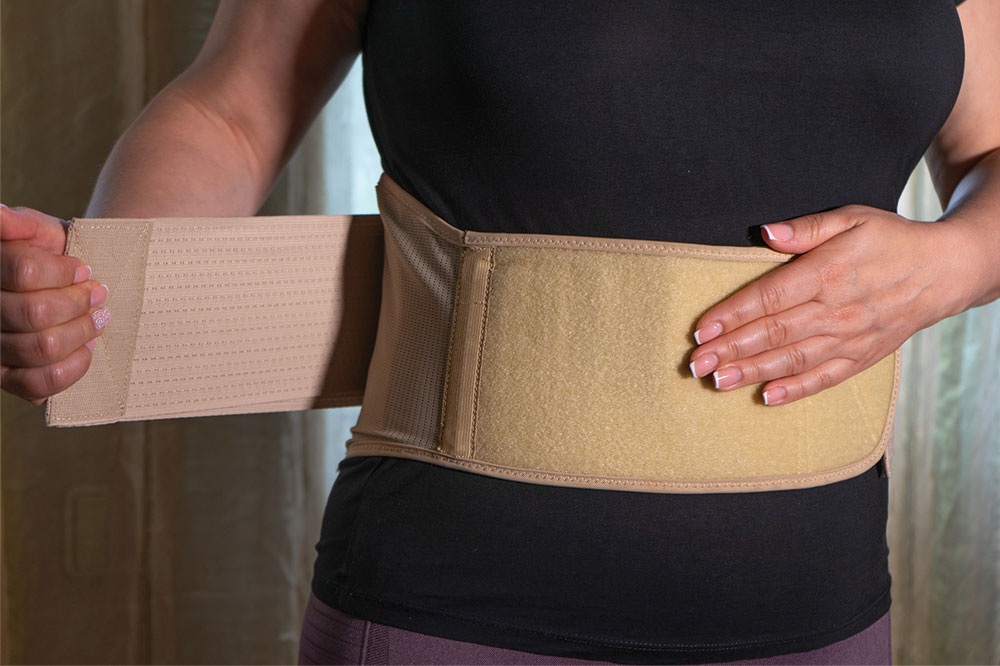Comprehensive Benefits of Wearing Back Support Braces for Pain Relief and Posture Improvement
Discover the comprehensive benefits of wearing back support braces, including injury stabilization, improved posture, pain relief, and enhanced spinal support. Learn how these braces aid in recovery and prevent future back issues, improving quality of life for many individuals. Proper use and professional advice are key to maximizing their effectiveness for back health.

Comprehensive Benefits of Wearing Back Support Braces for Pain Relief and Posture Improvement
Back pain is an exceedingly common issue, impacting a significant portion of the global population. Studies reveal that up to 80% of individuals will experience some form of back discomfort at least once during their lifetime. This widespread problem not only causes considerable personal discomfort but also results in substantial economic impact due to missed workdays and decreased productivity. Persistent back pain can lead to frustration, reduced mobility, and long-term health complications if not managed appropriately. One effective approach to managing back issues is the use of back support braces, which are specially designed gear intended to alleviate pain, provide stability, and promote healing of the spinal region. This detailed exploration will cover the extensive advantages of wearing back support braces, highlighting how they can improve quality of life, promote proper posture, and assist in injury recovery.
Back support braces offer several key benefits, making them a valuable tool in both therapeutic and preventive healthcare. Below, we delve into the most significant advantages to understand why their use has become increasingly popular among medical professionals and individuals seeking relief from back problems.
Stabilize Injured Regions for Accelerated Healing
When managing back injuries—whether from accidents, sports, or overuse—stability is paramount. Immobilizing the affected area helps prevent further tissue damage and facilitates healing. Back braces play a critical role in this process by restricting excessive movement of the lumbar, thoracic, or cervical spine, depending on the injury location. They act as external support structures that hold the spine in proper alignment, reducing strain and preventing aggravation of existing injuries.
These braces are designed with rigid or semi-rigid materials that firmly support muscles and bones, thereby limiting unwanted or harmful motions. By doing so, they create a stable environment conducive to recovery, minimizing discomfort throughout the healing process. Additionally, immobilization helps prevent secondary injuries, nerve compression, or worsening of symptoms that might arise from restless movements during daily activities.
Enhance Spinal Support and Reduce Musculoskeletal Strain
One of the primary roles of a back brace is to enhance support for the spine, especially in individuals with weak or compromised musculature. Such support helps distribute weight evenly, reducing the load on the vertebral discs, ligaments, and muscles. By stabilizing the spinal column, braces prevent excessive or abnormal movements that could lead to pain or injury.
This benefit is particularly important for people who engage in physically demanding jobs, athletes, or those recovering from spinal surgeries. A well-fitted brace minimizes the risk of muscle strains, ligament sprains, and other musculoskeletal issues by providing an external support system that cushions and stabilizes the vulnerable structures.
Promote Proper Posture and Alignment
Maintaining correct posture is fundamental to spinal health. Unfortunately, poor ergonomics, prolonged sitting, or habitual slouching can lead to misalignment, muscle fatigue, and long-term deformities. Back support braces assist in promoting an upright, natural spinal posture by applying gentle pressure that encourages proper alignment. This guidance helps prevent hunching, slumping, and other postural issues that accelerate degeneration and contribute to chronic pain.
Individuals with postural problems often notice improvements in their overall stability and comfort when wearing a brace. Over time, these devices can serve as a reminder to adopt healthier ergonomic habits, leading to better spinal hygiene and reduced risk of future problems.
Alleviate Chronic Back Discomfort
Chronic back pain—stemming from conditions such as degenerative disc disease, muscle strain, or spinal stenosis—can severely impair daily functioning and reduce overall quality of life. While braces are not a cure-all, they can significantly alleviate symptoms and improve comfort levels. When used in conjunction with physical therapy, medication, or other medical treatments, back support braces help diminish pain severity and enhance mobility.
This therapeutic benefit is especially valuable for those experiencing persistent discomfort that does not respond fully to medication alone. By providing external support, braces reduce the burden on strained muscles and ligaments, allowing pain to decrease and enabling individuals to engage more actively in their recovery and everyday activities.
Ignoring ongoing back pain can lead to serious complications, including long-term disability and decreased independence. Regular use of back braces—under medical supervision—combined with proper posture, stretching, and strengthening exercises, forms a comprehensive approach to back health management. If pain persists despite these interventions, it’s crucial to seek professional medical evaluation to address underlying causes effectively.
In summary, back support braces are a versatile and effective tool for managing various back conditions. Their ability to stabilize injured sites, support posture, reduce strain, and alleviate chronic pain make them indispensable in both treatment and prevention strategies. However, they should be used responsibly, with professional guidance, to ensure optimal benefits and avoid dependency. Proper fit, usage, and complementary therapies are essential components of a successful back health regimen.





